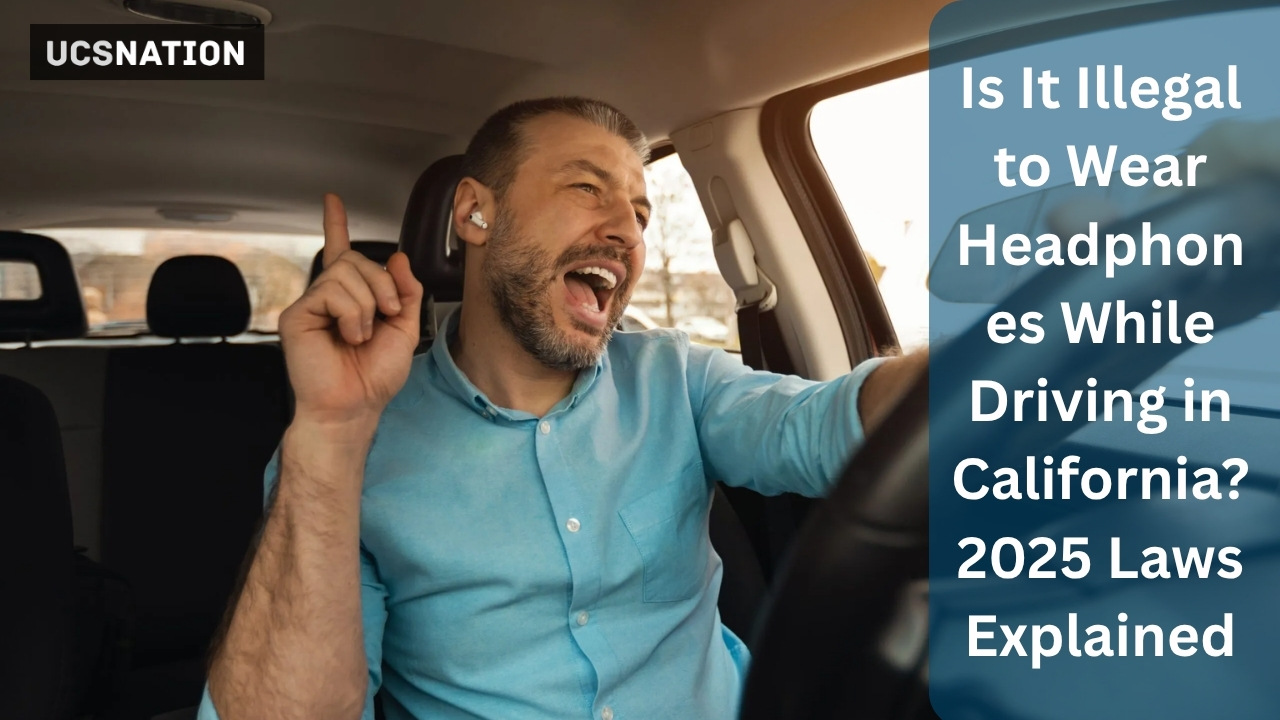In an era where technology weaves into every aspect of daily life, drivers often face confusion about what is and isn’t legal on the roads. Among the most common questions in California pertains to wearing headphones while driving. With vehicles growing smarter and entertainment more portable than ever, understanding the regulations around personal audio devices is crucial for road safety and legal compliance. This comprehensive guide explores the 2025 laws governing headphone use while driving in California, offering clarity, current statistics, and practical advice for motorists.
California Law: The Basics on Headphone Use Behind the Wheel
California’s Vehicle Code directly addresses the issue of headphones and driving. As of 2025, it is illegal for anyone operating a motor vehicle or bicycle to wear headphones or earplugs in both ears. The rationale behind this law is straightforward: full auditory awareness is critical for safe driving. The ability to hear emergency vehicle sirens, horns, and environmental sounds can be the difference between preventing and causing an accident.
While the core of the law remains unchanged, California occasionally updates related statutes to reflect evolving technology. Sometimes, confusion arises around what constitutes “headphones.” The law generally bans any device covering, resting in, or inserted into both ears. This includes over-ear headphones, earbuds, AirPods, and similar wireless or wired devices. One earpiece, however, is typically permissible, as seen in hands-free Bluetooth headsets often used for phone calls.
Exceptions to the Rule
Not every use of in-ear devices is forbidden. The state recognizes some exceptions for particular circumstances:
-
Licensed operators of authorized emergency vehicles, such as law enforcement or paramedics, may use communication devices as required by their duties.
-
Hearing protectors designed to reduce hazardous noise levels (such as those used by construction workers operating specific road equipment).
-
Devices for the improvement of medical conditions, such as hearing aids.
For the average driver, though, using headphones or earbuds in both ears remains illegal, regardless of whether music, podcasts, or phone calls are involved.
Why the Ban? Understanding the Safety Rationale
The primary concern of lawmakers is safety. Studies by organizations like the National Safety Council highlight the role of distracted driving in thousands of accidents each year in the U.S. In California, distracted driving has been implicated in approximately 10% of all road fatalities—more than 500 lives lost annually. When drivers wear headphones, they risk missing crucial auditory signals: an approaching ambulance’s siren, a car horn warning of danger, or the sound of screeching tires that might prompt quick reaction.
Moreover, research consistently shows that drivers using both earpieces experience “inattentional deafness,” where their brain filters out or fails to register important background sounds. This significantly impairs reaction time and increases the odds of collision.
Bluetooth Devices, Speakerphones, and Single Earpieces
With the explosion in popularity of wireless earbuds and Bluetooth-enabled devices, many drivers wonder if hands-free communication is legal. California law permits the use of a single earpiece, provided one ear remains open to surrounding sounds. This means you can use a hands-free device or keep a single earbud in for phone calls, navigation prompts, or voice assistants. The critical requirement: at least one ear must always be unobstructed.
However, placing an earbud, AirPod, or headphone in both ears—even if you’re only using it for calls—violates the statute and could result in legal penalties.
Consequences of Wearing Headphones While Driving
What happens if you’re caught driving with headphones over both ears? The consequences can be more than a slap on the wrist. Drivers face fines, with costs rising if the infraction contributes to a collision or is deemed a factor in reckless or negligent driving. In 2024, over 3,000 citations were issued in California for violations relating to headphone use while driving. Penalties can increase if additional violations—such as texting while driving—are found simultaneously.
In cases where headphone use leads to an accident, legal exposure grows even more serious. Insurance premiums may increase, criminal negligence charges may be considered, and you might be held liable for damages if your inability to hear crucial sounds contributed to an incident.
Stats and Facts About Distracted Driving in California
Understanding the dangers is impossible without looking at the numbers:
- Nearly 10% of all traffic deaths in California involve distracted driving.
- Studies indicate drivers wearing headphones are two times more likely to miss emergency sirens.
- In 2024, California Highway Patrol reported more than 3,000 citations for headphone use violations.
- Surveys reveal that nearly 20% of young drivers admitted to occasionally wearing both earbuds while behind the wheel.
- Nationwide, about 424,000 people were injured in distracted driving crashes in the year prior to 2025.
These figures underscore the real-world implications of what might seem like a harmless habit.
Headphones While Cycling: The Same Rules Apply
California extends its headphone laws not just to motorists but also to cyclists. Bicyclists often wear earbuds for music or audio navigation, but wearing them in both ears is subject to the same penalties as in a car. Cycling organizations emphasize that safe riding depends on full environmental awareness, and there is precedent for accidents (and legal lawsuits) where headphone use played a role.
Public Transportation and Ride-Share Considerations
For those driving for Uber, Lyft, or other ride-share services, the law is the same: do not cover or block both ears while operating the vehicle. This even applies if your phone is connected to the vehicle’s audio system or if you’re waiting for ride requests via the app.
On public transportation, passengers are free to use headphones. However, operators and drivers—such as bus drivers or light rail operators—must avoid headphone use except in cases of employer communication devices or specific work-related exceptions.
How Law Enforcement Enforces Headphone Regulations
Police officers may initiate a stop if they observe someone operating a vehicle with both ears covered by headphones or earbuds. Enforcement is usually responsive—if an officer sees a violation or if the use of headphones is determined to have played a role in unsafe driving, a stop and citation can occur.
Law enforcement emphasizes education alongside enforcement. Many departments incorporate reminders about distracted driving, including headphone use, into their social media and community outreach programs.
How to Stay on the Right Side of the Law
To avoid running afoul of California’s headphone regulations in 2025, keep these best practices in mind:
-
Never wear headphones or earbuds in both ears while driving or cycling.
-
If you use hands-free devices, ensure only a single earpiece is in use.
-
Take advantage of your car’s built-in Bluetooth, speakerphone, or dashboard audio system for navigation and calls.
-
Educate young drivers and passengers about the risks and legal consequences of headphones on the road.
-
Remember: if you need to adjust audio, pull over safely rather than fumble with devices while driving.
Myths and Misconceptions
A few persistent myths can lead drivers astray:
-
“Hands-free” means “risk-free.” Not always—hands-free doesn’t guarantee your mind is on the road, and too much audio input in one ear can still be distracting.
-
You’re safe to use both earbuds at a red light. The law prohibits headphone use while “operating” a vehicle, which applies even when stopped in traffic or at signals.
-
Traffic officers don’t really enforce the law—it’s just for show. In reality, police do conduct stops and issue citations, particularly after collisions or erratic driving is observed.
The Future: Will the Laws Change With New Technology?
As technology advances, so too do concerns about new forms of distraction. While no major legislative changes are pending for 2025 specifically regarding headphones, ongoing studies monitor how smart glasses, augmented reality headsets, and even in-car entertainment systems may affect driver awareness.
Experts predict that future updates to regulations may explicitly reference wireless earbuds, bone-conduction headphones, or even AI-driven smart cockpit assistants. For now, the focus remains on keeping drivers connected to their surroundings in the simplest, most effective ways.
Conclusion
In summary, California takes road safety seriously, and that means clear rules about wearing headphones and earbuds while driving or cycling. The law is unambiguous: blocking both ears with audio devices is illegal for drivers and bike riders alike, with few exceptions. Compliance not only avoids fines but protects you, your passengers, and everyone else sharing the road. As technology continues to evolve, so should your commitment to safe, law-abiding behavior behind the wheel. If in doubt, remember the simplest rule: keep one ear free, and your attention on the road.
By staying informed and making smart choices, you contribute to a culture of responsibility and safety on California’s roads—a goal every driver should share.













Leave a Reply